|
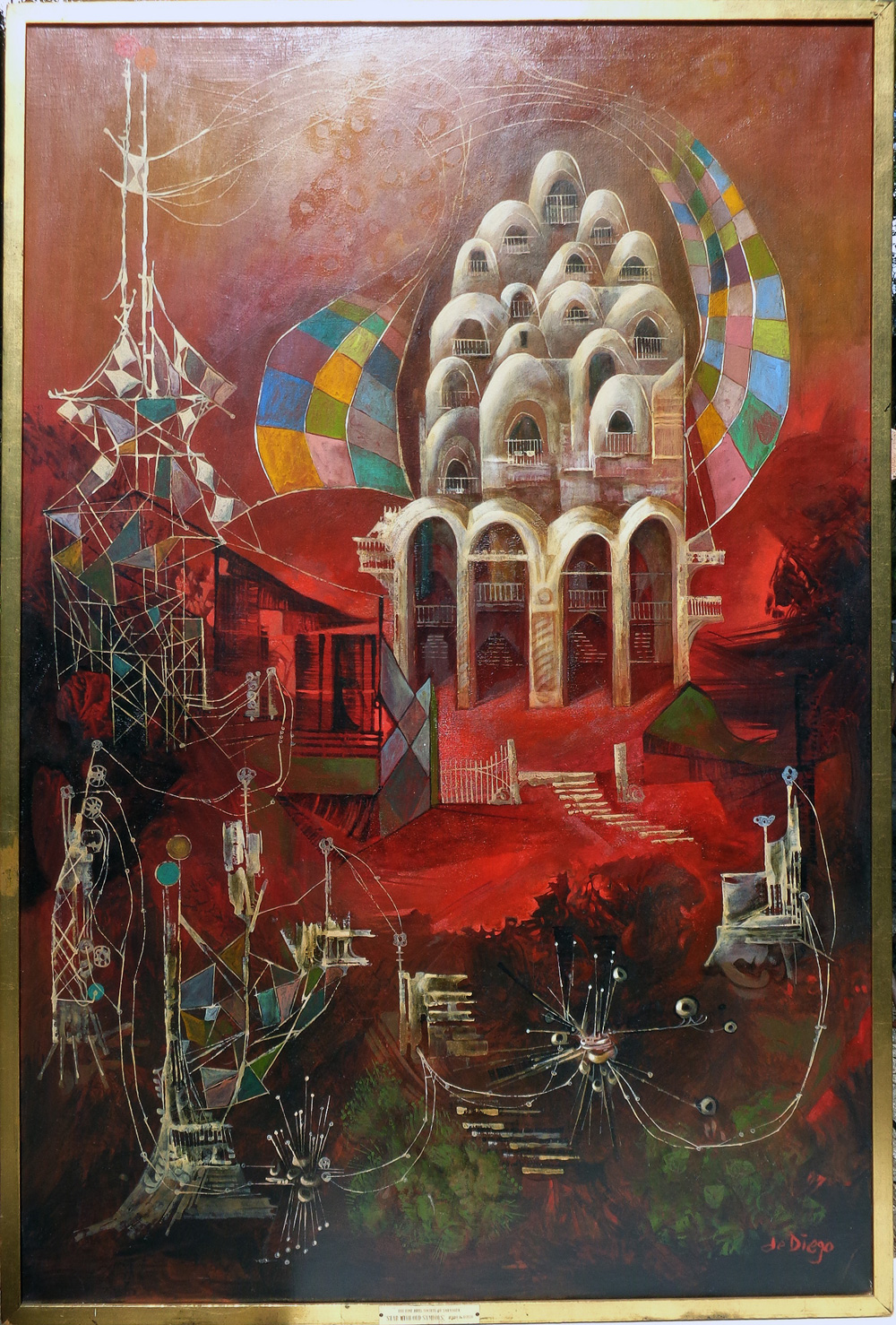
JULIO de
DIEGO (1900-1979)
Star with
old Simbols (Symbols)
Date: 1970
Oil on
canvas: 48 x 32 inches
Frame:
Painted black and gold wood frame: 49 x 33 inches
Signed: de
Diego (lower right)
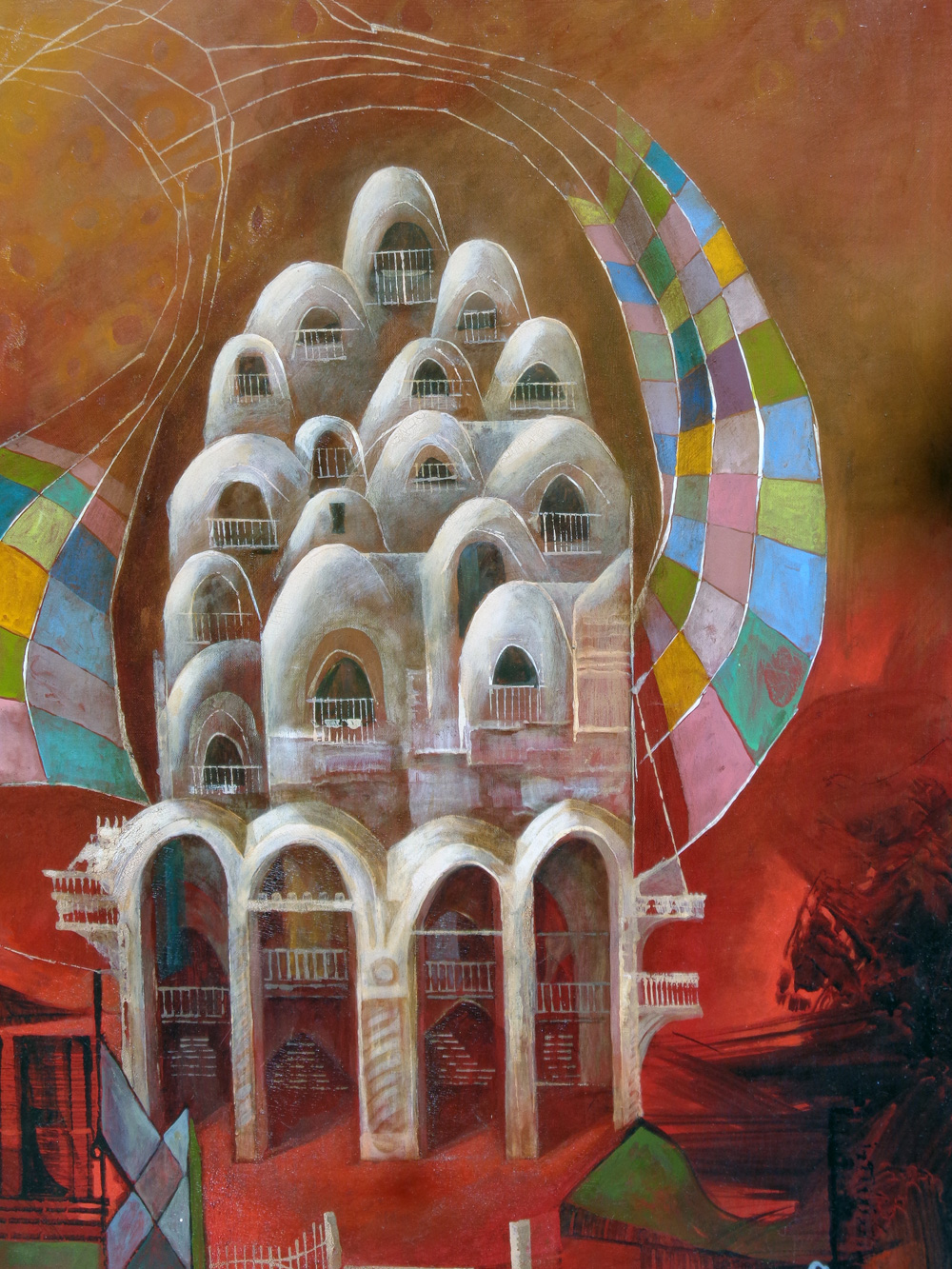
EXHIBITIONS
Sarasota Art Association 1972
Van Wezel Performing Arts Hall, Sarasota, FL
Corbino
Galleries, Sarasota, Fl. "Julio de Diego: A Journey", February 14-26,
1992.
Selby Gallery, Ringling School of Art and Design,
Sarasota, FL. Multiple Visions: A History of Art in Sarasota, July 7-
August 18, 2000.
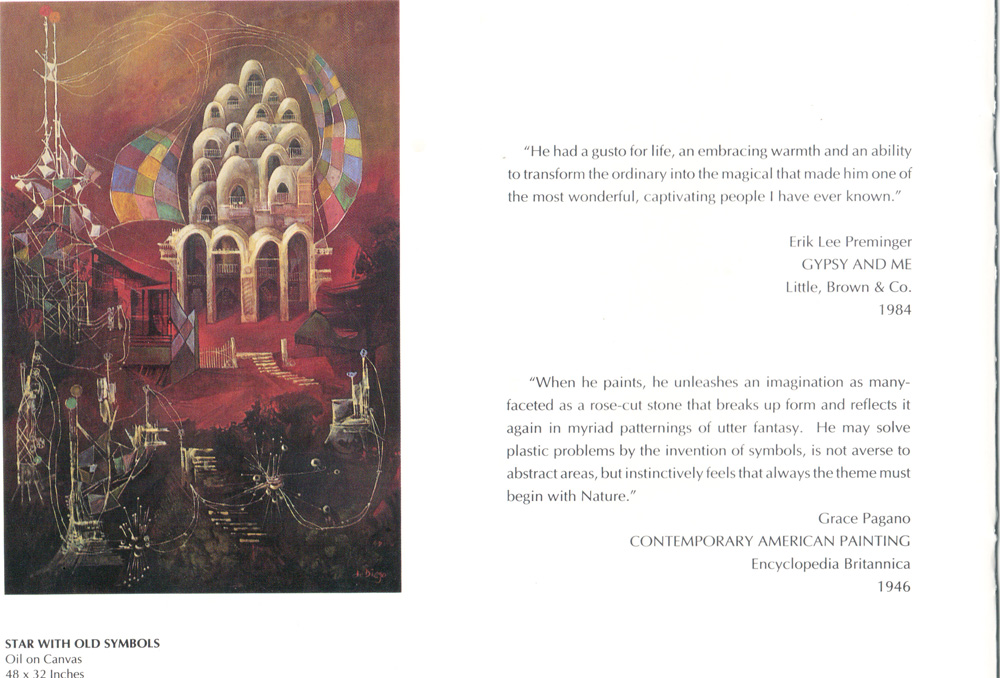
LITERATURE
Dymond, Richard. "Canvas power:
Exhibit to showcase artists who made Sarasota the Art Mecca," Bradenton
Herald 2 Jul 2000, p 1-2 [ill. Star with Old Symbols] Caption: Julio de Diego (1900-1979) Star
with Old Symbols, 1970. He painted political protests against the
Spanish Civil War and the atomic bomb; appeared on television talk shows
and in movies. He married Gypsy Rose Lee. With the reconstructed Van
Wezel Performing Arts Hall now able to handle national Broadway tours
and a half dozen quality theaters able to out-muscle New York's entire
off Broadway lineup if given the chance, it's clear that Sarasota has a
well-deserved national performing arts reputation. But "stage power"
hasn't been Sarasota's art tag forever. Actually, in the 1940s and
1950s, it was more like Canvas power. Back then, Sarasota was
nationally known for its visual arts, among the best of any town other
than New York. Sarasota was on a par even with Chicago, experts say. Now
after 50 years the artists who created Sarasota's reputation. Four
artists, Jon Corbino, Julio de Diego, Farnsworth, Fletcher Martin and
Everett Shin, are represented in the Encyclopedia Britannica Collection.
The show includes: Syd Solomon, Jon Corbino, David Budd, Wells Sawyer,
Everett Shinn, Manierre Dawson, Jerry Farnsworth, Sydney Laufman, Helen
Sawyer, Katherine Schmidt, Julio de Diego, Lois Bartlett Tracy, Boris
Margo, Fletcher Marin, Hilton Leech, Ben Stahl, Gabriel Kohn, Conrad
Marca-Relli, Phillip Guston, Richard Florsheim, Jimmy Ernst, John
Chamberlain and Richard. Anuszkiewicz.
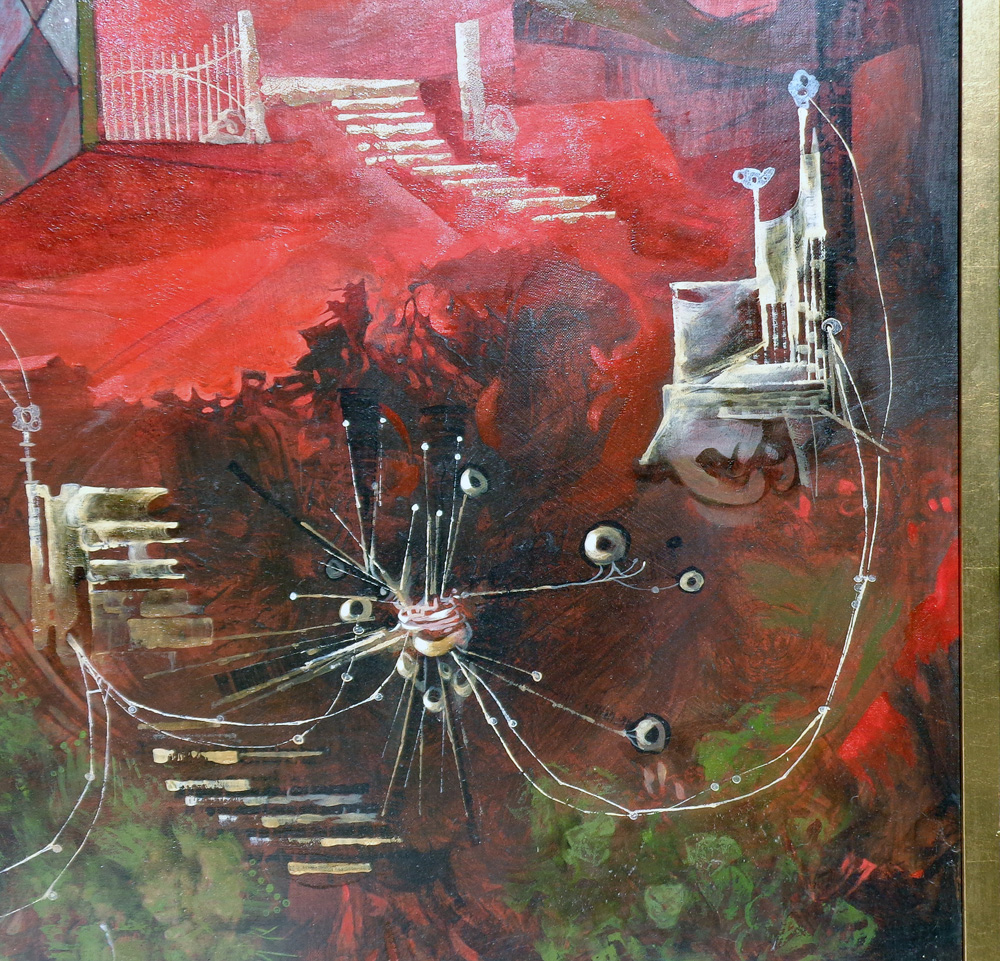
PROVENANCE
Estate
of the Artist
Collection
of the Fine Arts Society of Sarasota,
FL
Private
collection
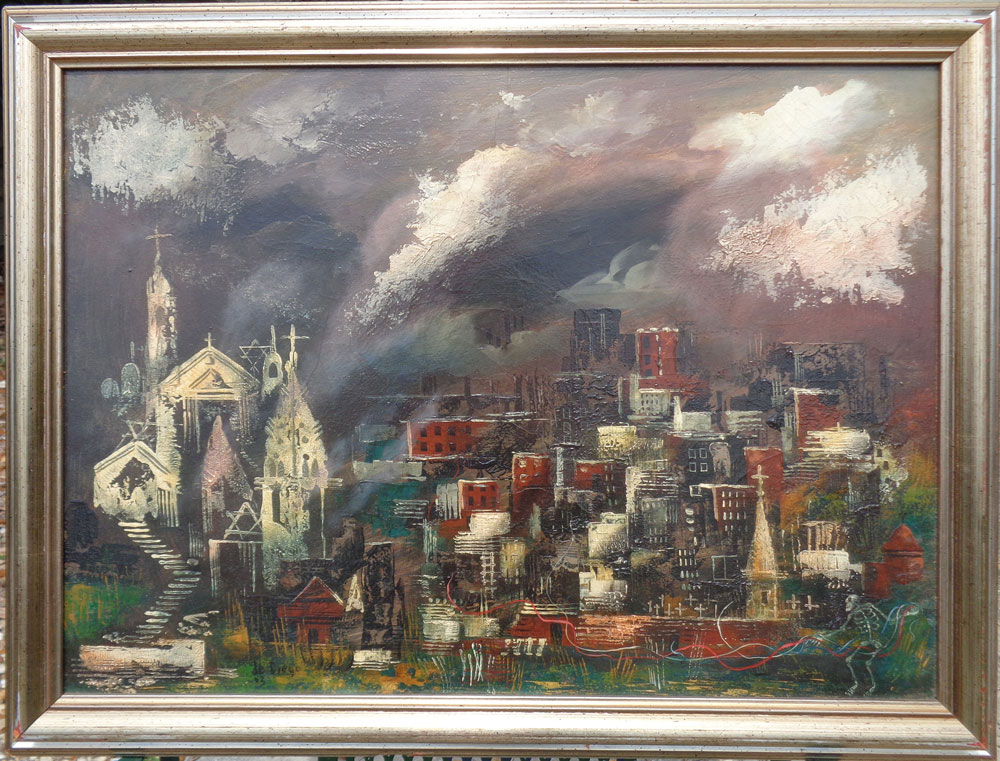
City of Many
Activities
Date: 1943
Oil on Masonite: 16
x 22 inches
Newer gold painted
wood frame: 19 x 25 inches
Signed: de Diego 43
Condition: random
craquelure on painting and paint loss on frame
Another painting in
this series is in the Hirshhorn Museum and
Sculpture Garden, Washington, DC
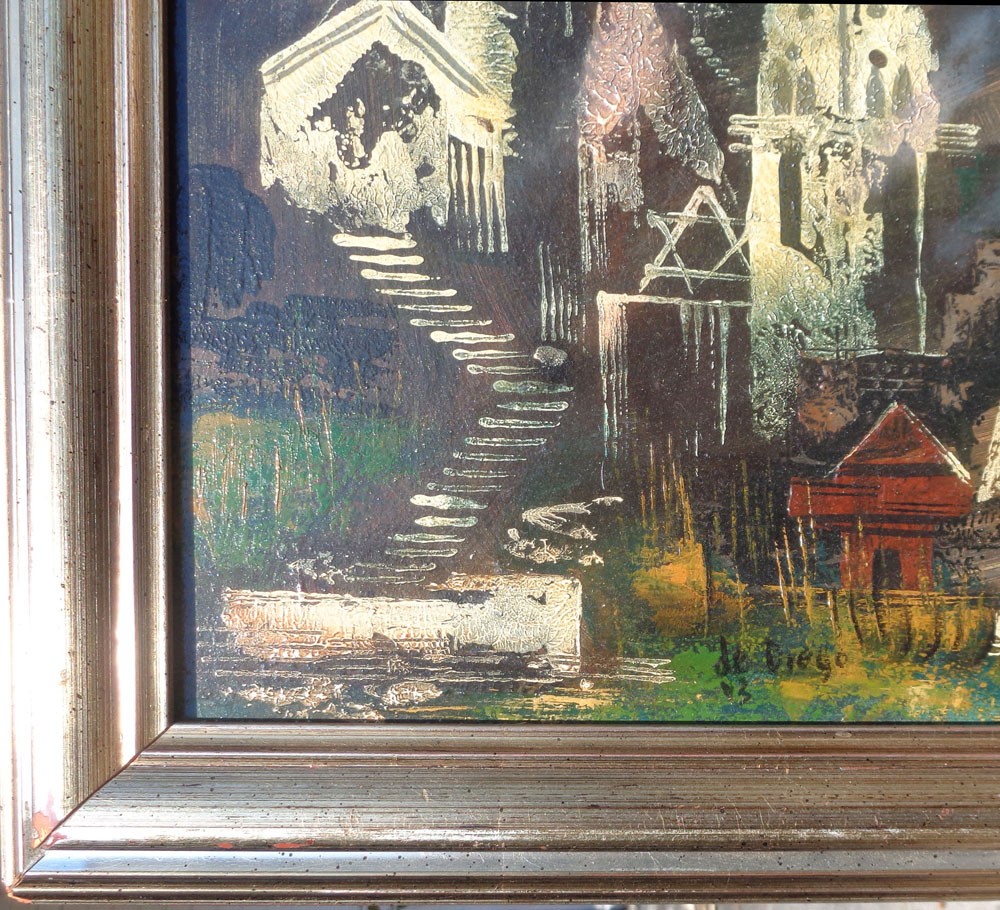
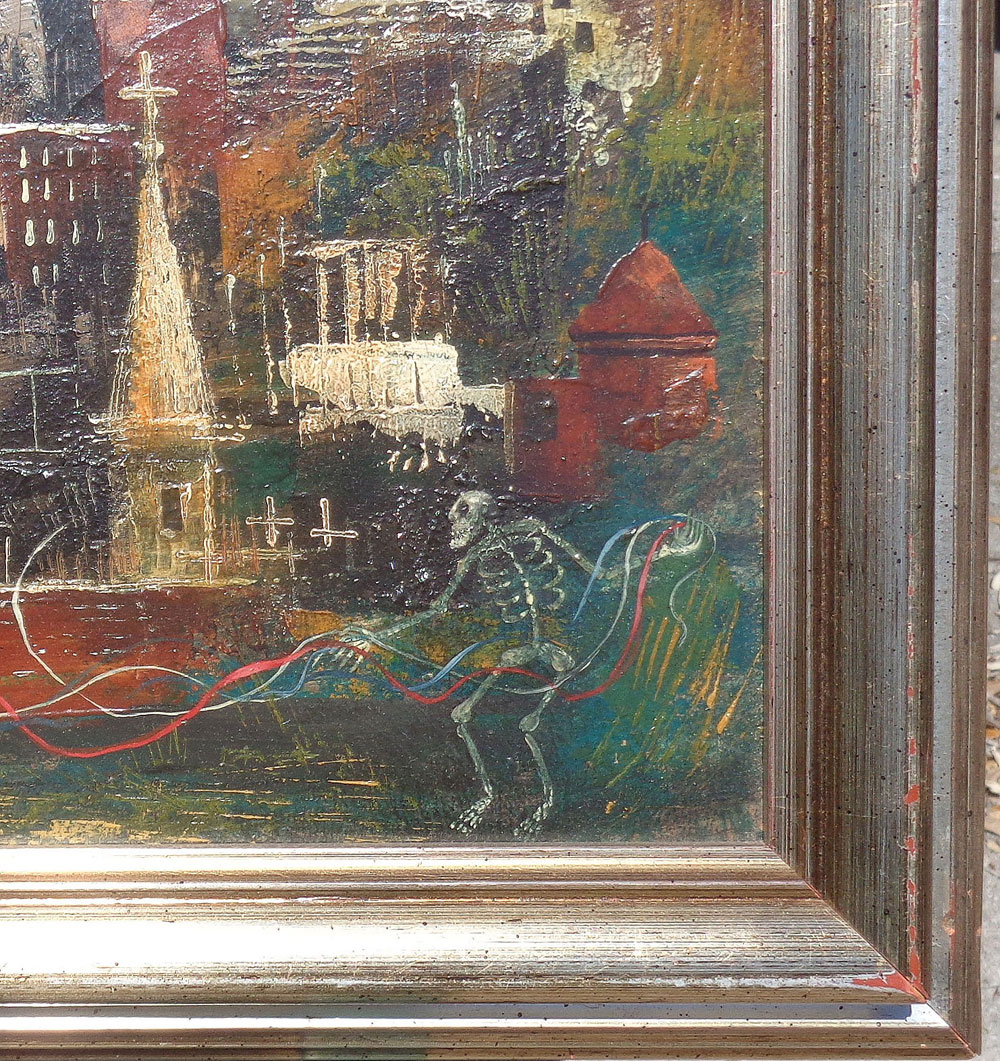
Note above: the dark area on the frame's upper right is a shadow.
JULIO
de DIEGO
Julio de
Diego was a creative adventurer and an incorrigible idealist. He
explored new worlds of image and content in his paintings, always
pushing beyond established borders. Not only did he paint the monumental
themes of our time, but he also probed the metaphysics of destiny and
fantasy. All his work was an enigmatic commentary on life, often with
an undertone of irony or humor. During his capricious and flamboyant
career, Julio de Diego created a body of work that is astonishing in its
inventiveness and magnitude.
The odyssey
of Julio de Diego began in Spain where he was born at the turn of the
century. Although his first encounter with fine art was in the
magnificent churches of Madrid, de Diego had his first exhibition at the
age of fifteen in a gambling casino. His family's opposition to a career
in the arts compelled him to seek his fortune in Paris. In 1924 he
immigrated to the United States, where he discovered ambience and
celebrity in the New York art world and later married Gypsy Rose Lee.
During his
formative years in Paris, de Diego assimilated the principles of
modernism. Cubism, surrealism and abstractions were integrated into his
paintings which sometimes included the influence of Goya, Picasso or the
Mexican muralists. His intellectual curiosity and sensual pursuits
prompted him to create images that became active performers in his
aesthetic and philosophical debates. He was the picaresque puppeteer
whose cast of characters good, evil and fantastic was brought to life
with spirit and energy.
Just as de Diego
explored innovative themes, he also developed a range of techniques. He
perfected the Renaissance method of envelatura, often
using as many as 40 oil glazes or veils of color on a single painting.
Gouache, graphite and mixed media were all possibilities for
experimentation with both color and form. The surface of his paintings
is complex and continuous, every stroke of paint an assertion of
aesthetic intent and a commitment to excellence.
All my
painting are autobiographical, full of mystery, incongruous monsters,
visions and sensuous personages, sybaritic dreamers, sentimentalist,
romantics and comic sadists all these things appear and disappear then
there is a contest to recapture them when they vanish. A painting is not
what it is, but the memory that we have a life.
Julio de Diego 1979
As an
artist, he fits into no easy pigeonhole. He is a traditionalist at
heart---and one of the best---yet he is not afraid to pursue an
eccentric notion wherever it may lead.
TIME magazine 6/15/1962
But they're all
de Diego, as imaginative, as personal, as vibrant as ever, but set now
in a more significant and interesting context from both a compositional
and symbolic point of view.
Emily
Genauer
NEW YORK
HERALD TRIBUNE
1962
MUSEUM
AND PUBLIC COLLECTIONS
The
Metropolitan Museum of Art, New York City, NY
The Art
Institute of Chicago, IL
Phillips
Collection, Washington, DC
Hirshhorn
Museum and Sculpture Garden, Washington, DC
Santa
Barbara Museum of Fine Arts, Santa Barbara, CA
Walker Art
Center, Minneapolis, MN
Milwaukee
Art Institute, Milwaukee, WI
San Diego
Fine Arts Society, San Diego, CA
Montclair
Art Museum, Montclair, NJ
Florida
State University, Tallahassee, FL
Seigfred
Gallery, Ohio University School of Art, Athens, OH
Washington
University Collection, St. Louis, MI
Fine Arts
Society, Sarasota, FL
Encyclopedia
Britannica
International Business Machines
Abbott
Laboratories
Office of
International Information and Cultural Affairs, Department of State,
Washington, DC
|

































